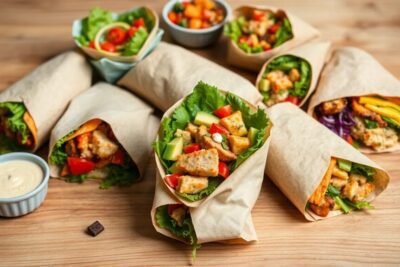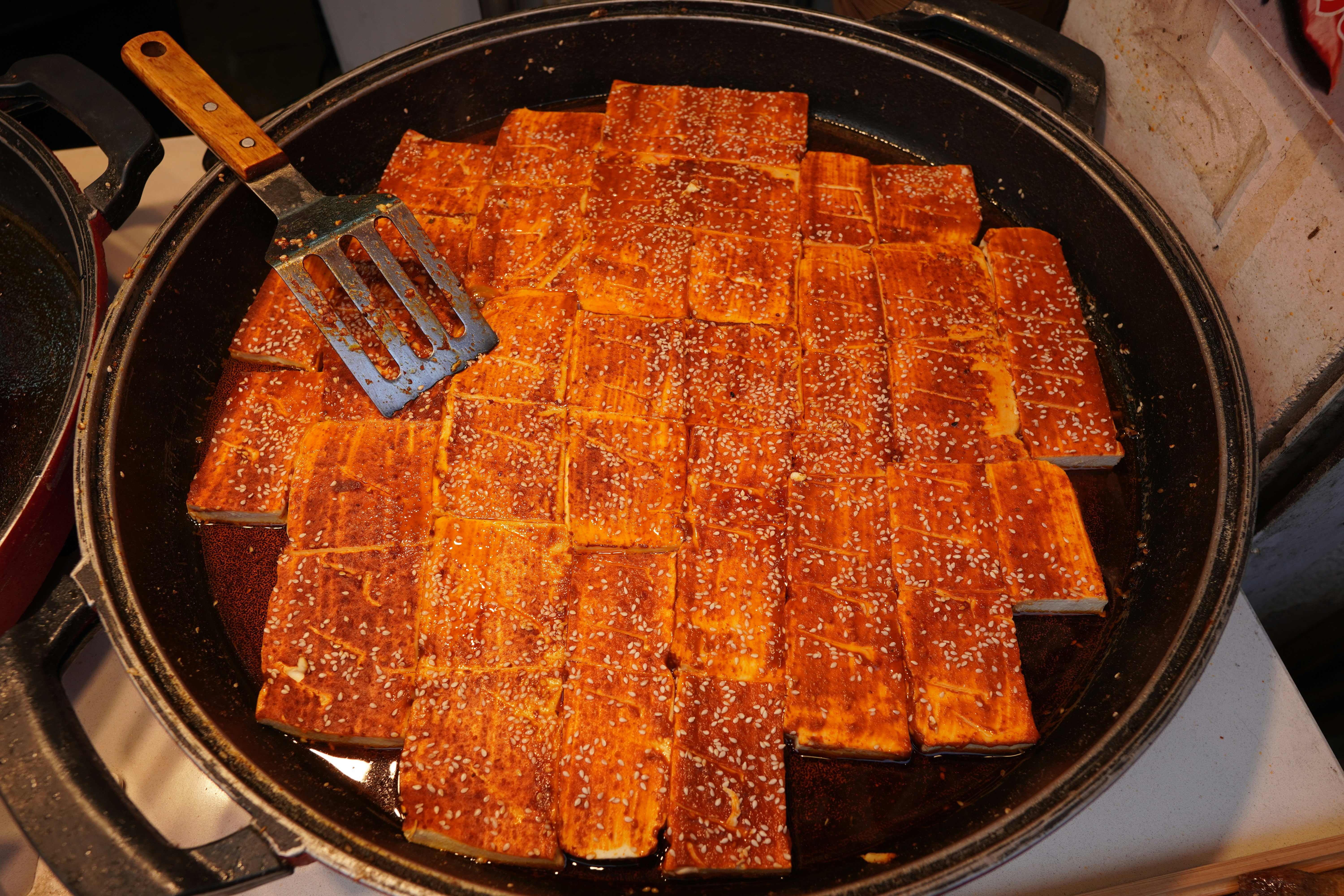
Delicious Diabetic-Friendly Quinoa Recipes You Must Try
Introduction to Quinoa for Diabetics
Quinoa has gained recognition as a superfood, particularly for individuals managing diabetes. One of the primary reasons for this is its low glycemic index. Foods with a low glycemic index are digested and absorbed more slowly, causing a gradual rise in blood sugar levels rather than the spike often associated with high-GI foods. This characteristic makes quinoa a wise choice for those seeking to monitor their glucose levels effectively.
In addition to its favorable glycemic index, quinoa boasts a high protein content. Compared to many other grains, quinoa is unique, as it provides complete protein, containing all nine essential amino acids required by the body. For individuals with diabetes, incorporating protein into meals can aid in satiety, reducing the temptation to snack on less healthy options. Furthermore, quinoa is rich in essential nutrients such as magnesium, manganese, and phosphorus, which can support overall health.
An additional benefit of quinoa is its fiber content. High-fiber foods contribute to better digestion and can help stabilize blood sugar levels, making quinoa an ideal option for diabetic-friendly meal planning. The fiber in quinoa also promotes a feeling of fullness, further assisting in weight management—an important factor for many people living with diabetes.
Versatility stands as another significant advantage of quinoa. It can be cooked in a variety of ways, serving as an excellent base for salads, soups, and main dishes. Whether you opt for warm quinoa bowls topped with vegetables or cold salads filled with fresh ingredients, the ability to adapt quinoa to various recipes enhances its appeal to those with dietary restrictions.
Overall, quinoa’s low glycemic index, high protein, and fiber content make it an exceptional food choice for individuals managing diabetes. Incorporating delicious, diabetic-friendly quinoa recipes into your meal plan can lead to a healthier lifestyle without sacrificing flavor.
Nutritional Benefits of Quinoa
Quinoa, often referred to as a superfood, is an excellent source of nutrition, making it a remarkable option for those seeking diabetic friendly quinoa recipes. This versatile grain is rich in essential vitamins and minerals that contribute to overall health and well-being. It is particularly notable for its high content of protein, fiber, and various micronutrients, including magnesium, iron, and B vitamins.
One of the defining features of quinoa is its balanced amino acid profile, which sets it apart from other grains. Unlike many plant-based foods, quinoa is a complete protein, meaning it contains all nine essential amino acids necessary for human health. This property is especially beneficial for individuals with diabetes, as protein can help maintain stable blood sugar levels by reducing hunger and preventing spikes in glucose.
In addition to protein, quinoa boasts a significant amount of dietary fiber. Incorporating high-fiber foods into a diet can help regulate blood sugar levels. The fiber in quinoa promotes a slow and steady release of glucose, which is crucial in managing diabetes. Moreover, the presence of antioxidants in quinoa, such as flavonoids, enhances its health benefits. These compounds are known for their anti-inflammatory properties and play a role in reducing oxidative stress, which is vital for individuals with diabetes.
Furthermore, quinoa is rich in minerals that are essential for overall health and metabolic function. Magnesium, for instance, has been shown to improve insulin sensitivity, while iron is important for transporting oxygen in the blood. Including diabetic friendly quinoa recipes in everyday meals can thus support effective blood sugar control while ensuring that the body receives necessary nutrients.
By incorporating quinoa into the diet, individuals can experience a satisfying and nutritious addition that not only complements a diabetic-friendly meal plan but also enhances holistic health. Regular consumption can serve as a strategic approach to managing diabetes and maintaining optimal health status.
Breakfast Quinoa Recipes
Starting your day with a nutritious breakfast is essential, especially for those managing diabetes. Incorporating quinoa into breakfast not only provides an excellent source of protein but also helps maintain stable blood sugar levels. Here are two delicious diabetic-friendly quinoa recipes to kickstart your mornings.
One popular choice is Quinoa Porridge. To prepare this dish, you will need 1 cup of cooked quinoa, 2 cups of unsweetened almond milk, and a pinch of cinnamon for flavor. Begin by combining the cooked quinoa and almond milk in a saucepan. Heat over medium heat, stirring occasionally until warmed through. Once it reaches the desired temperature, remove from heat and add a sprinkle of cinnamon, along with your choice of diabetic-friendly sweetener, such as stevia or monk fruit. For added nutrition, top the porridge with fresh berries or chopped nuts, which not only enhance the taste but also provide healthy fats and antioxidants.
Another fantastic option is the Quinoa Breakfast Bowl. For this recipe, start by preparing 1 cup of cooked quinoa. In a separate bowl, whisk together 2 eggs and cook them in a non-stick skillet until scrambled. Combine the scrambled eggs with the cooked quinoa, and then fold in chopped spinach and tomatoes for a boost of vitamins. Season with salt and pepper to taste. Drizzle a bit of olive oil or avocado for healthier fats, making this bowl a satisfying and balanced meal. This meal is not only filling, but it also offers a variation of nutrients that are beneficial for overall health.
These diabetic-friendly quinoa recipes are not only easy to prepare but also provide a delectable start to your day. By incorporating wholesome ingredients, you can enjoy a breakfast that is both satisfying and supportive of your dietary needs.
Lunch Quinoa Salads
Quinoa salads are an excellent choice for a healthy, sustaining lunch, especially for those managing diabetes. These dishes are not only nutritious but also allow for a variety of flavors and textures by incorporating seasonal vegetables and herbs. Below are some vibrant and diabetic-friendly quinoa recipes that are perfect for your midday meal.
1. Mediterranean Quinoa Salad
Ingredients:
- 1 cup cooked quinoa
- 1 cup cherry tomatoes, halved
- 1 cucumber, diced
- ½ cup red onion, finely chopped
- ½ cup Kalamata olives, pitted and sliced
- ¼ cup feta cheese, crumbled
- 2 tablespoons olive oil
- Juice of 1 lemon
- Salt and pepper to taste
Preparation:
In a large bowl, combine the cooked quinoa, cherry tomatoes, cucumber, red onion, olives, and feta cheese. In a small bowl, whisk together the olive oil and lemon juice, then pour over the salad. Toss everything gently until well mixed, and season with salt and pepper. This colorful salad is not only appealing but also fits well within diabetic friendly quinoa recipes.
2. Quinoa and Black Bean Salad
Ingredients:
- 1 cup cooked quinoa
- 1 can black beans, rinsed and drained
- 1 bell pepper, chopped
- 1 avocado, diced
- ¼ cup cilantro, chopped
- Juice of 1 lime
- 1 teaspoon cumin
- Salt to taste
Preparation:
In a bowl, combine quinoa, black beans, bell pepper, avocado, and cilantro. Drizzle with lime juice and sprinkle cumin and salt. Mix well and serve this hearty salad, rich in protein and fiber—ideal for maintaining stable blood sugar levels.
These lunch quinoa salads serve as delightful, nutritious options, contributing significantly to a balanced diet for those with diabetes. Each recipe offers a unique combination of ingredients that not only enhances the flavor but also ensures a satisfying culinary experience. As you explore these diabetic-friendly quinoa recipes, you can enjoy a healthful lunch without the worry of impacting blood sugar negatively.
Quinoa Dinner Entrees
Quinoa dinner entrees provide an excellent option for those seeking diabetic-friendly meals that are both nutritious and delicious. As a complete protein and a low glycemic index food, quinoa acts as an ideal staple in a balanced diet, especially for individuals managing diabetes. One notable dish is the quinoa-stuffed bell peppers, which combines quinoa with fresh vegetables, lean protein such as turkey or chicken, and a blend of spices. This dish not only provides essential nutrients but also delivers a satisfying flavor profile, making it a perfect addition to your meal plan.
Another compelling option is a savory quinoa bowl featuring roasted vegetables and a source of lean protein, such as grilled tofu or shrimp. By mixing in a variety of colorful, low-carb vegetables—like spinach, zucchini, and carrots—you ensure a rich array of vitamins while maintaining a low glycemic load. Adding spices like cumin or paprika enhances the flavor while keeping the dish healthy and satisfying. Tossing in a drizzling of lemon or a light vinaigrette will boost taste without adding unnecessary sugars.
Moreover, quinoa can be incorporated into hearty salads, served warm or cold. A quinoa salad with chickpeas, cucumbers, and diced tomatoes dressed with a lemony tahini sauce not only provides variety but also satisfies your hunger pangs. The combination of ingredients creates a balance of flavors and textures that is sure to please your palate. Incorporating these diabetic-friendly quinoa recipes into your weekly meal prep can help make mealtime easier and more enjoyable, while promoting sound dietary choices. Whether it’s a stuffed pepper or a protein-packed salad, these options are not only health-conscious but also delightful to share with family and friends.
Quinoa Snacks and Sides
Quinoa, often hailed as a superfood, serves as a versatile ingredient for a variety of diabetic-friendly snacks and side dishes. Its rich nutrient profile and low glycemic index make it an ideal choice for those managing their blood sugar levels. One creative way to incorporate quinoa into your snacking routine is through the preparation of quinoa crackers, which can be both easy to make and delightful to the palate.
To create delicious quinoa crackers, start by cooking half a cup of quinoa and letting it cool. Once cooled, combine it with two tablespoons of almond flour, one tablespoon of olive oil, and your choice of seasonings, such as garlic powder or dried herbs. Spread the mixture thinly on a baking sheet and bake at 350°F (approximately 175°C) for 15-20 minutes, or until crispy. These quinoa crackers are not only flavorful but also provide a healthy crunch that can satisfy your snack cravings without compromising your dietary goals.
In addition to crackers, quinoa can also be transformed into healthy dips. A quinoa hummus, for example, offers a tasty alternative to traditional chickpea-based versions. Combine one cup of cooked quinoa, two tablespoons of tahini, the juice of one lemon, a clove of garlic, and salt to taste in a food processor. Blend until smooth, adding water as necessary to achieve your preferred consistency. This dip pairs beautifully with fresh vegetables or whole-grain pita bread, providing a rich source of protein and fiber, making it a perfect snack for gatherings or casual snacking.
Exploring these diabetic-friendly quinoa recipes not only enhances your culinary repertoire but also ensures you enjoy satisfying, nutritious options. By incorporating nutritious ingredients like quinoa into snacks and sides, you can maintain a balanced diet while still indulging in flavorful experiences.
Sweet Quinoa Treats
In the realm of diabetic-friendly cooking, sweet treats can pose a challenge due to traditional recipes often relying on sugar and high-carb ingredients. However, by utilizing quinoa as a base, one can create delightful sweet treats that not only satisfy cravings but also align with dietary guidelines for those managing diabetes. Quinoa is a nutrient-dense grain, providing protein, vitamins, and minerals while being low on the glycemic index.
One excellent option is quinoa-based energy bites. These small treats can be easily made by combining cooked quinoa with nut butter, such as almond or peanut butter, and a natural sweetener like stevia or erythritol. To enhance flavor, add ingredients such as chopped nuts, seeds, or unsweetened cocoa powder. These energy bites are perfect for an afternoon snack or a quick breakfast on the go, providing sustained energy without causing spikes in blood sugar levels.
Another enticing option is low-sugar quinoa desserts, such as quinoa pudding. By cooking quinoa in unsweetened almond milk and flavoring it with vanilla extract and a bit of cinnamon, one can create a creamy, comforting dessert. Serve it chilled or warm, garnished with fresh berries or a sprinkle of nutmeg. This dessert not only meets the standards for diabetic-friendly quinoa recipes but also provides a satisfying end to any meal.
When making sweet quinoa treats, the key lies in choosing wholesome ingredients and controlling the amount of added sweeteners. Exploring various flavor combinations ensures that these desserts maintain excitement for the palate. Embracing these nutritious alternatives allows one to indulge in lovely sweet treats while prioritizing health and well-being.
In conclusion, sweet quinoa treats offer a versatile and enjoyable way to satisfy sweet cravings without compromising dietary needs. These recipes serve as a perfect balance of flavor and health, enabling those with diabetes to enjoy dessert without worry.
Tips for Cooking and Storing Quinoa
Quinoa is a versatile grain that can significantly enhance diabetic-friendly meal options when prepared correctly. Before cooking, one vital step is to rinse the quinoa thoroughly to remove its natural coating, called saponin. This coating can impart a bitter taste, so rinsing under cold water for a few minutes will help ensure a pleasant flavor. Utilizing a fine-mesh sieve makes this process manageable and effective.
The typical water-to-quinoa cooking ratio is 2:1. For every one cup of quinoa, use two cups of water or broth. Once you have rinsed the quinoa, combine it with the appropriate amount of liquid in a pot. Bring the mixture to a boil, then reduce the heat to low, cover, and let it simmer for about 15 minutes. After cooking, it's essential to let the quinoa stand, covered for an additional five minutes to allow it to fluff up. Using a fork rather than a spoon to fluff the grain helps maintain its light texture, making it a delightful addition to various diabetic-friendly quinoa recipes.
Storage is equally important to maintain the freshness of cooked quinoa. Once cooled, store it in an airtight container in the refrigerator, where it can last for up to five days. For longer storage, cooked quinoa can be frozen in individual portions, which will conveniently allow for quick meal preparation. When meal-prepping, consider batch cooking quinoa, as it can serve as a base for multiple meals throughout the week. Combine it with vegetables, lean proteins, or legumes for easy and satisfying diabetic-friendly meals. By implementing these cooking and storage tips, you can enjoy quinoa in many flavorful and nutritious ways.
Conclusion
Incorporating quinoa into a diabetic-friendly diet offers numerous benefits that can enhance meal planning and overall joy in eating. As a nutrient-dense whole grain, quinoa is an excellent source of protein and fiber, which play vital roles in stabilizing blood sugar levels. This makes it an ideal ingredient in diabetic friendly quinoa recipes, as it helps prevent spikes in glucose, allowing for better management of diabetes while ensuring satisfaction during meals.
One of the key advantages of quinoa is its versatility. It can be used in a variety of dishes, from salads to casseroles, allowing those with diabetes to explore different flavors and textures without compromising their health. By integrating quinoa into your diet, you can create truly delicious meals that are not only beneficial in terms of health but also appealing to the palate. The wide range of diabetic friendly quinoa recipes available today enables an effortless fusion of nutrition and taste, making it easier to adhere to dietary guidelines.
In addition to its nutritional perks, adopting quinoa can simplify meal planning. With its relatively quick cooking time and ability to pair well with various ingredients, quinoa can serve as a fundamental component of many meals. Whether enjoyed as a hearty base, a satisfying side dish, or intermingled with fresh vegetables and herbs, quinoa allows for creativity and personalization in your meal preparations. This encourages individuals to take charge of their health without making sacrifices on flavor and enjoyment.
Ultimately, embracing quinoa as a regular part of your diet can offer a sustainable approach to managing diabetes. By experimenting with the myriad of delightful quinoa recipes, individuals can discover new favorites that support their health goals while delighting their taste buds.










